1.Le Tableau
La zone de jeu principale comporte 28 cartes disposées en sept colonnes, certaines tournées vers le haut et d'autres vers le bas.
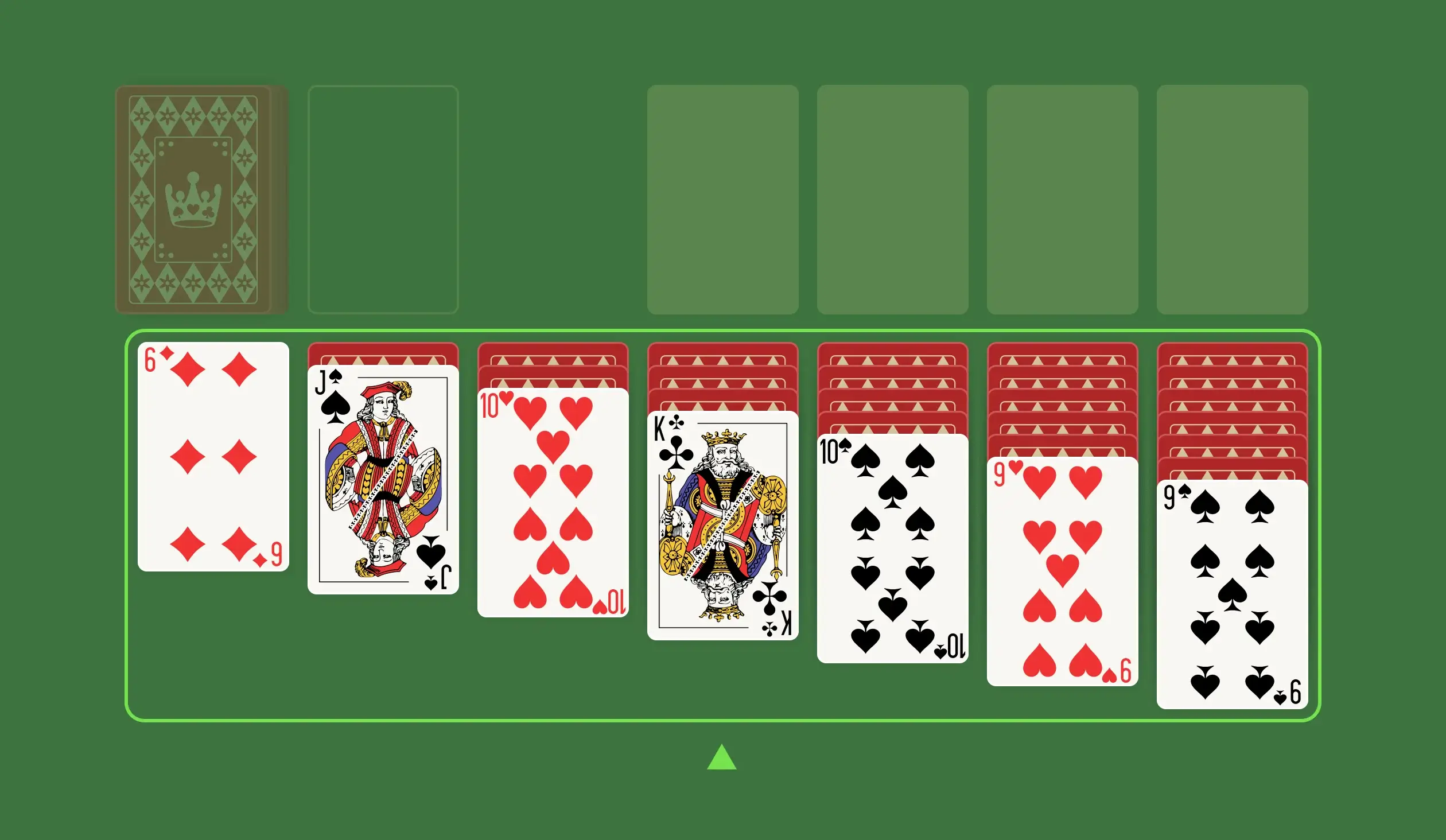
Faites l'expérience de notre plateforme unique de jeux de Solitaire de n'importe où, n'importe quand !
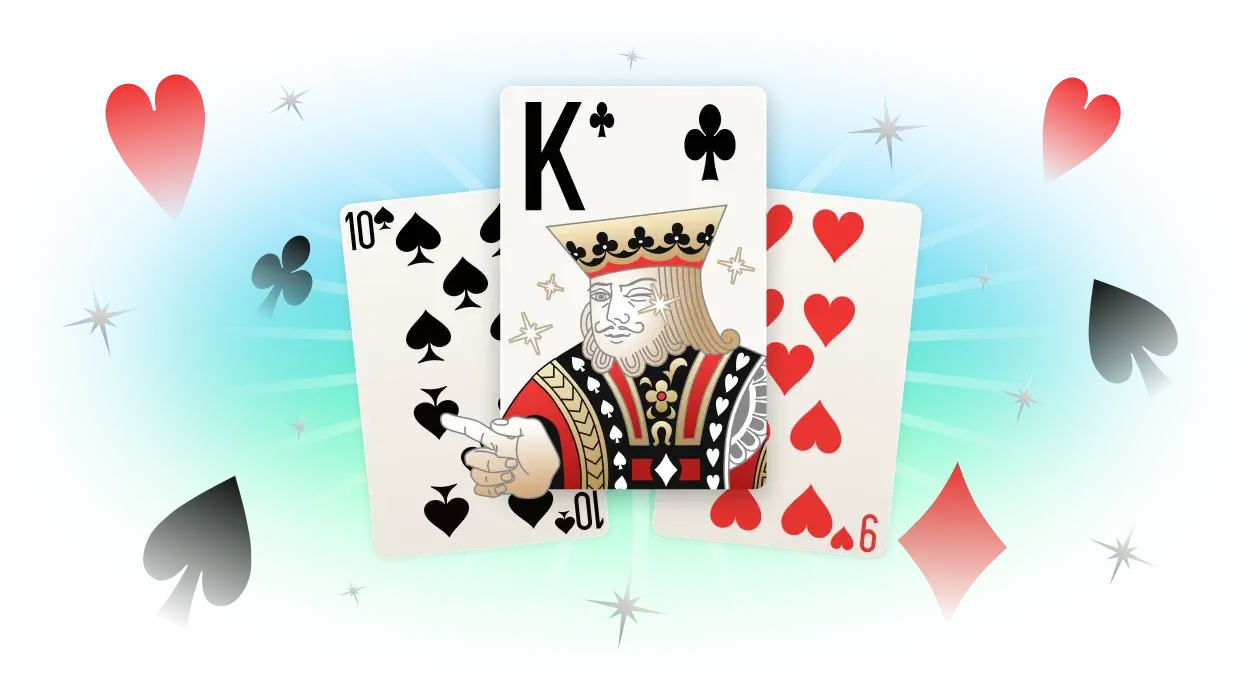
Trier toutes les cartes en quatre piles de fondation, par couleur et par ordre croissant de l'A au K. Par exemple, un 9 peut être placé sur un 8.
Arranger les cartes en 7 colonnes par ordre décroissant et en alternant les couleurs. Par exemple, un J peut être placé sur une Q ou une Q.
Déplacez des cartes individuellement ou en groupes prétriés qui respectent les règles.
Seul un K peut commencer une nouvelle colonne.
Cliquez sur le talon pour retourner les cartes et les ajouter à la défausse les unes après les autres. La carte du dessus de la défausse peut être jouée.
Comment jouer au Solitaire en ligne en quelques minutes.
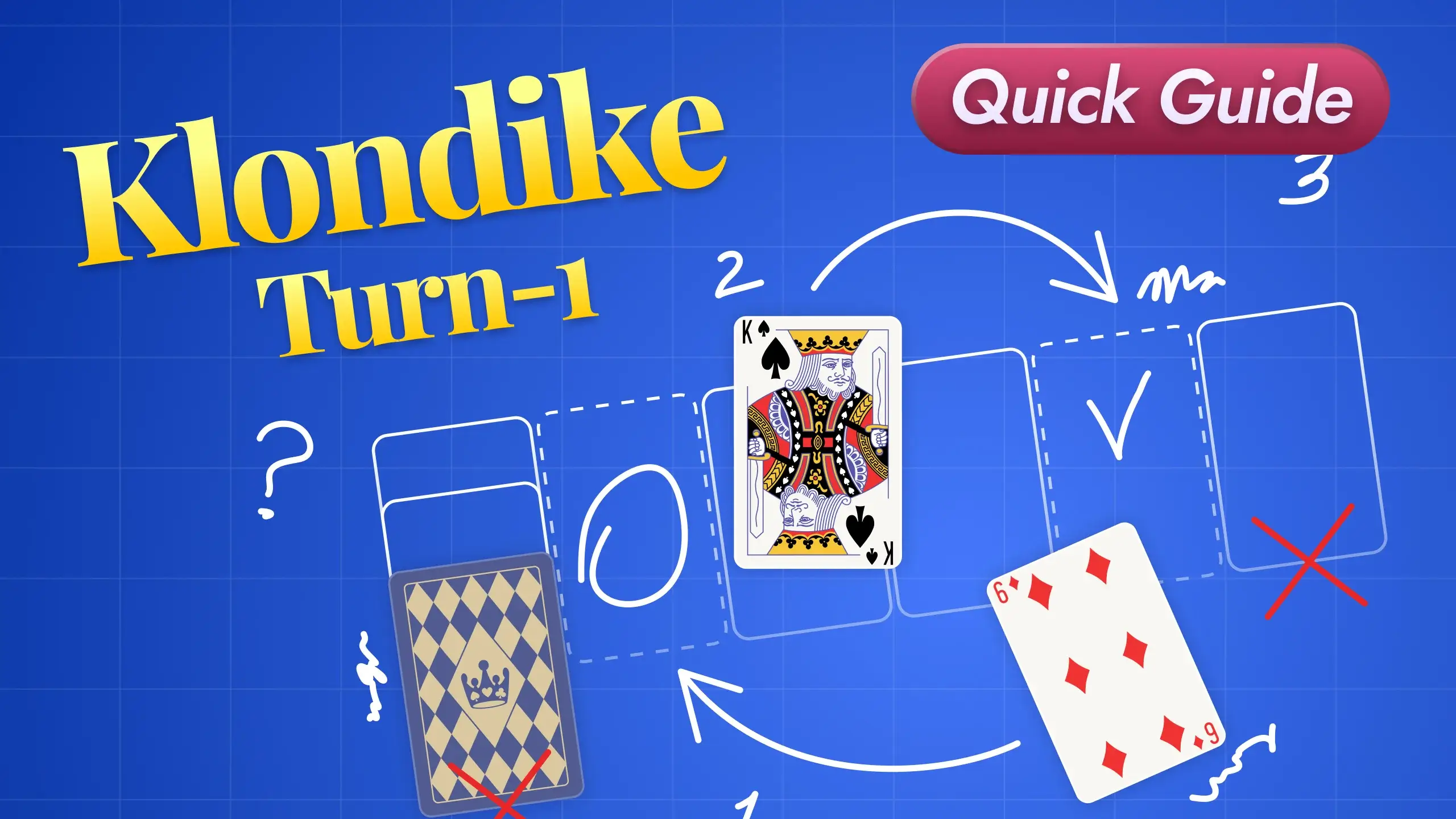
Le Solitaire, jeu à un seul joueur, est l'un des jeux d'entraînement cérébral les plus populaires au monde. L'histoire du jeu s'étend sur plusieurs siècles et les joueurs se sont toujours adonnés au Solitaire pour échapper à l'ennui. Lorsque vous jouez au Solitaire, vous pouvez vous détendre dans un état presque méditatif tout en ressentant une touche de défi satisfaisante.
Jouer au Solitaire peut recharger les batteries de votre esprit bien mieux que de regarder un épisode de la dernière émission de télé-réalité. La présentation simple et le design minimaliste sont exactement ce dont vous avez besoin à la fin d'une journée bien remplie. Il n'y a pas de scénarios trop stimulants ou d'images qui font battre le cœur - juste du calme.
Bienvenue dans notre retraite du Solitaire, qui vous permettra de jouer à toutes les variantes du jeu dans un espace magnifique.
Votre espace de jeu se compose de quatre zones principales :
La zone de jeu principale comporte 28 cartes disposées en sept colonnes, certaines tournées vers le haut et d'autres vers le bas.

Cette pile de 24 cartes face cachée est utilisée lorsque vous avez besoin d'une nouvelle carte pour continuer le jeu.
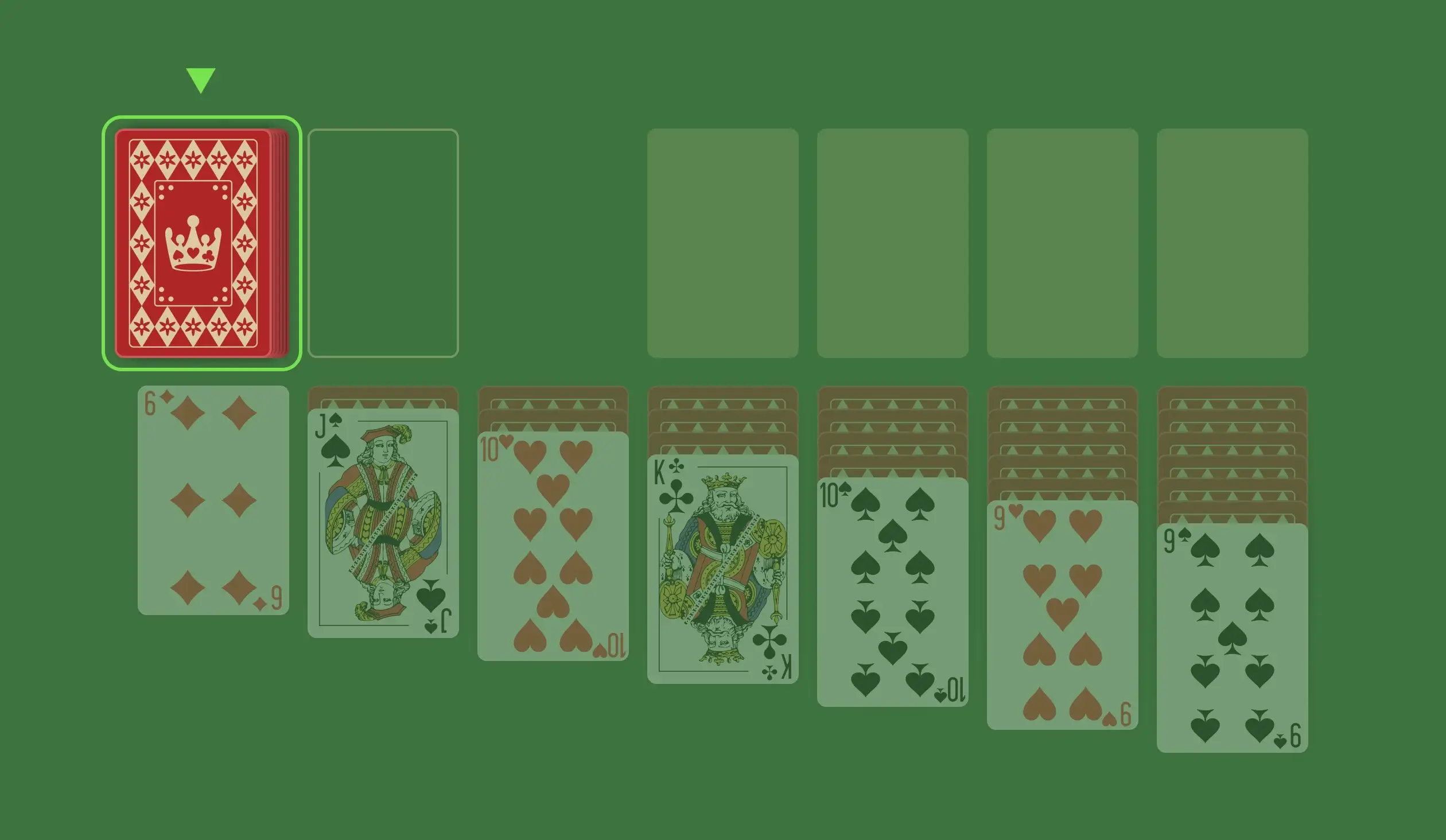
Lorsqu'une carte de la Pioche n'est pas immédiatement utile, elle est transférée dans la Défausse.
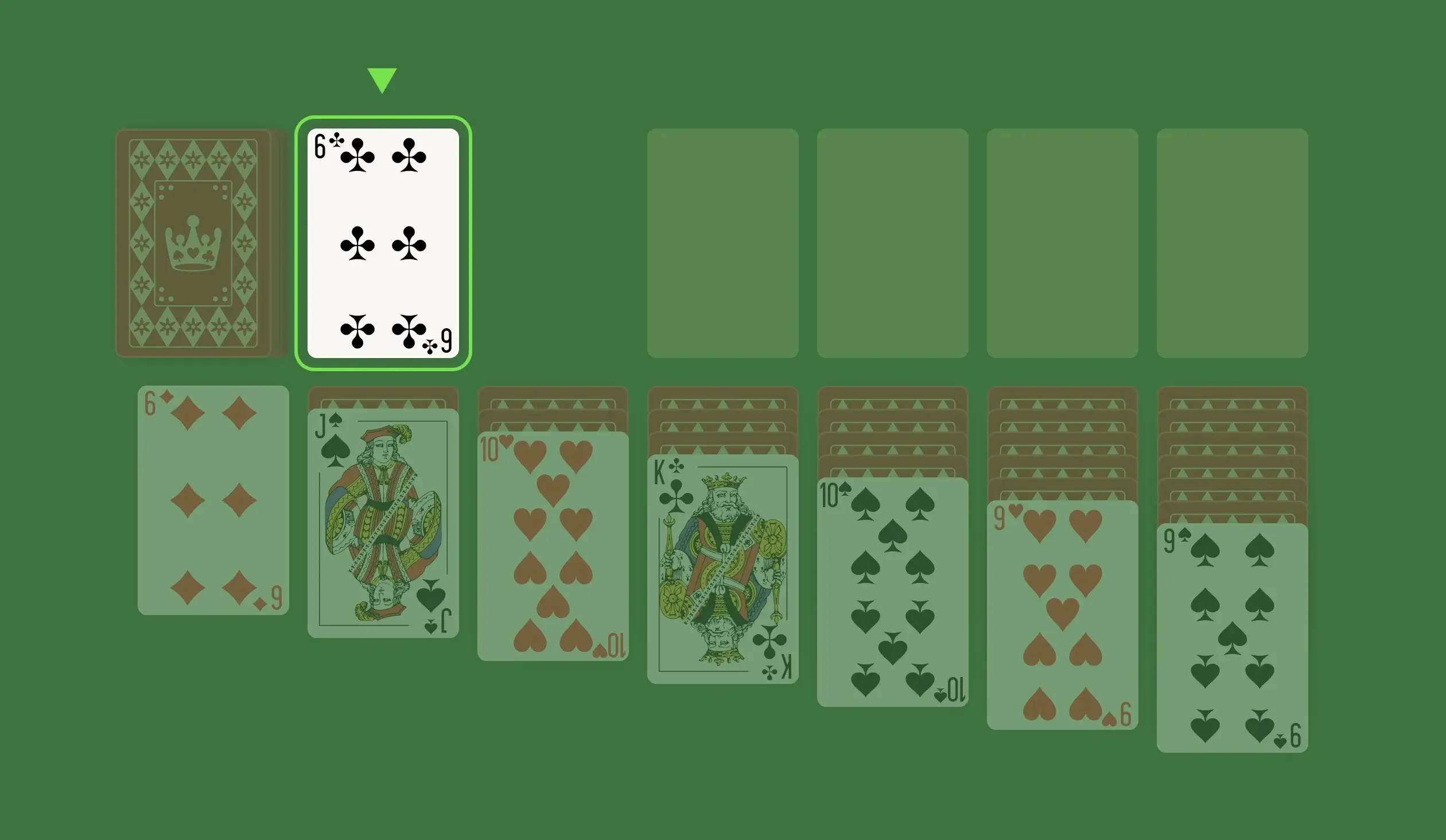
Construisez les quatre emplacements de la Fondation, de l'As au Roi.
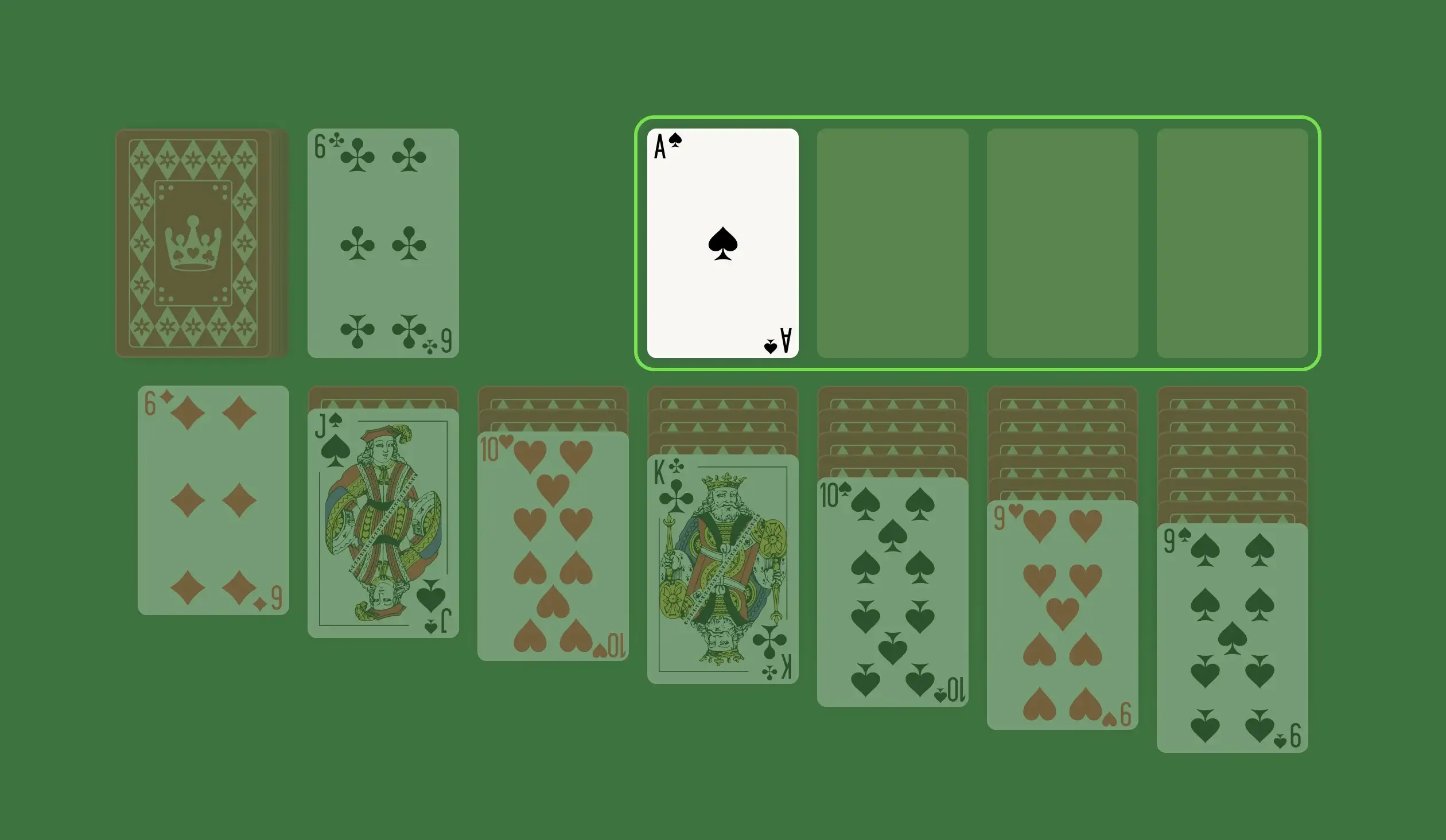
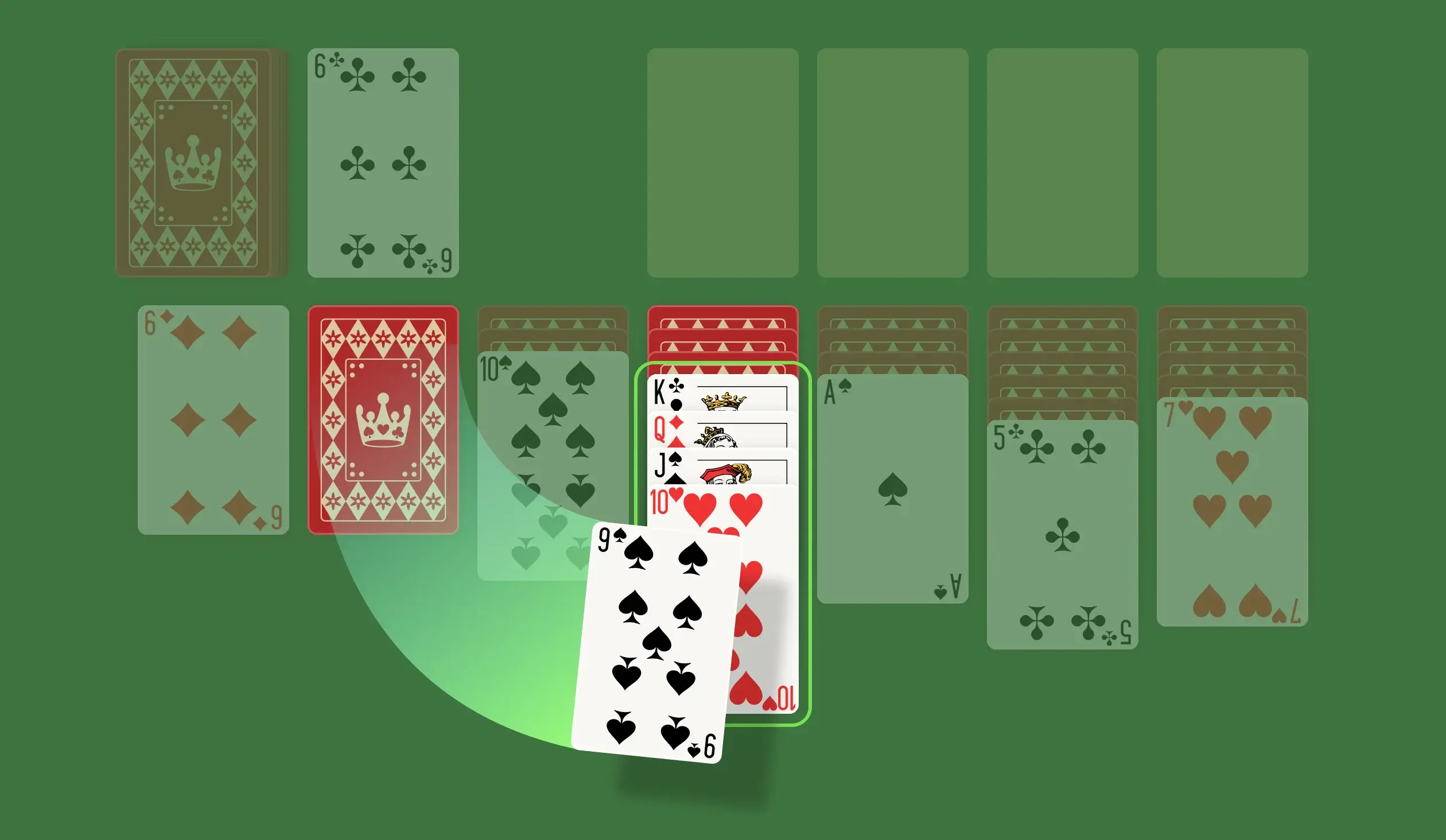
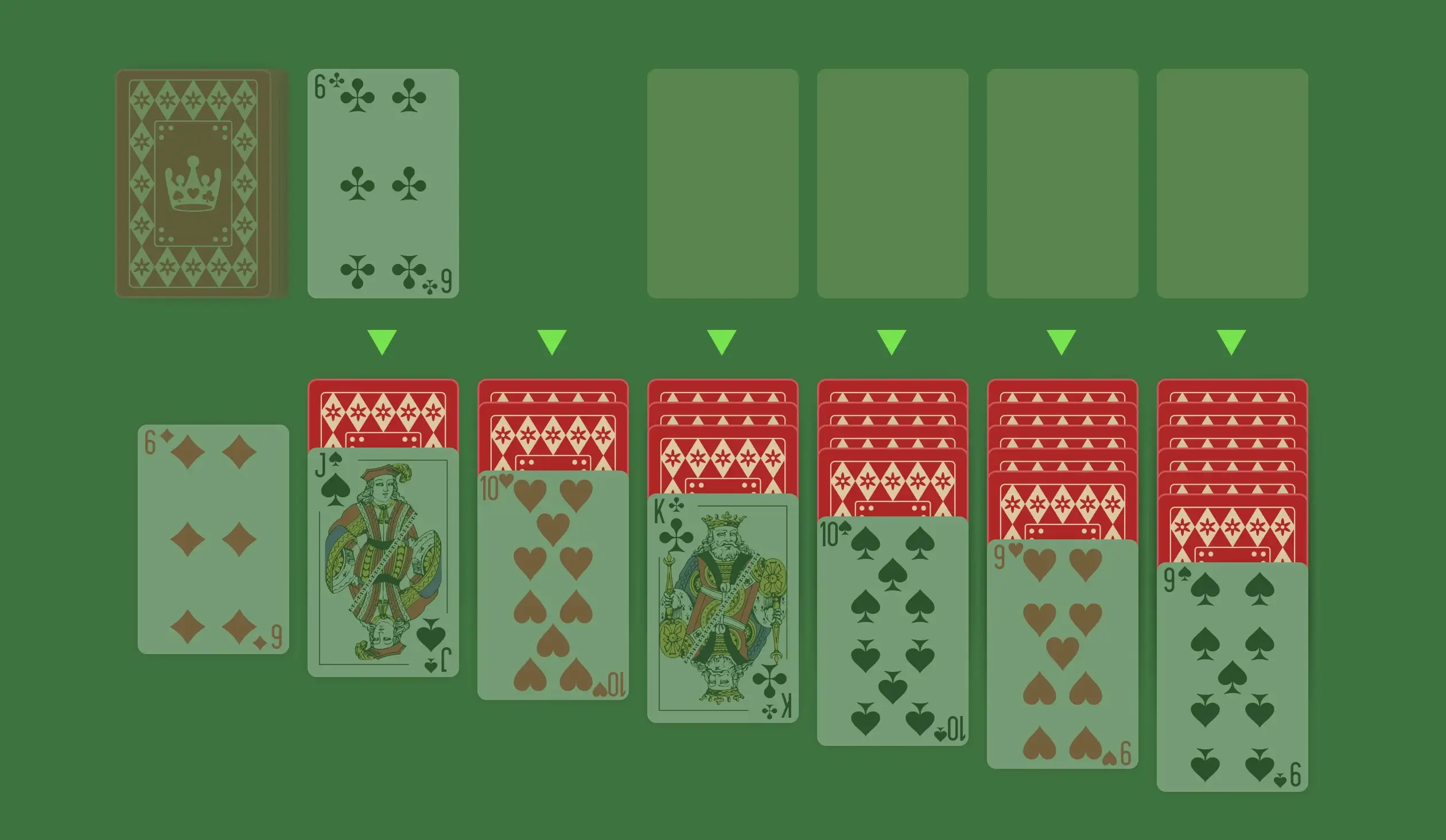
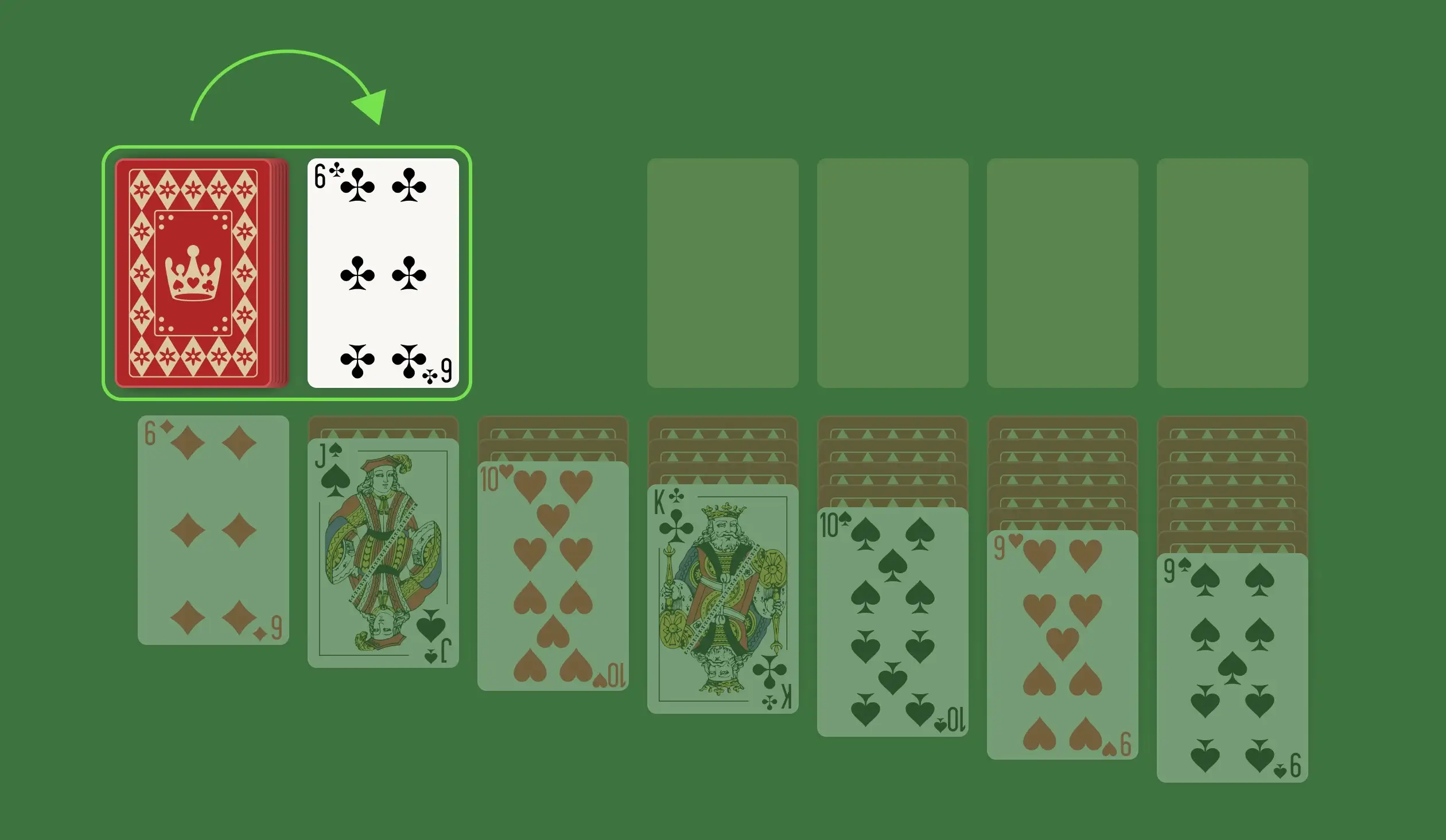
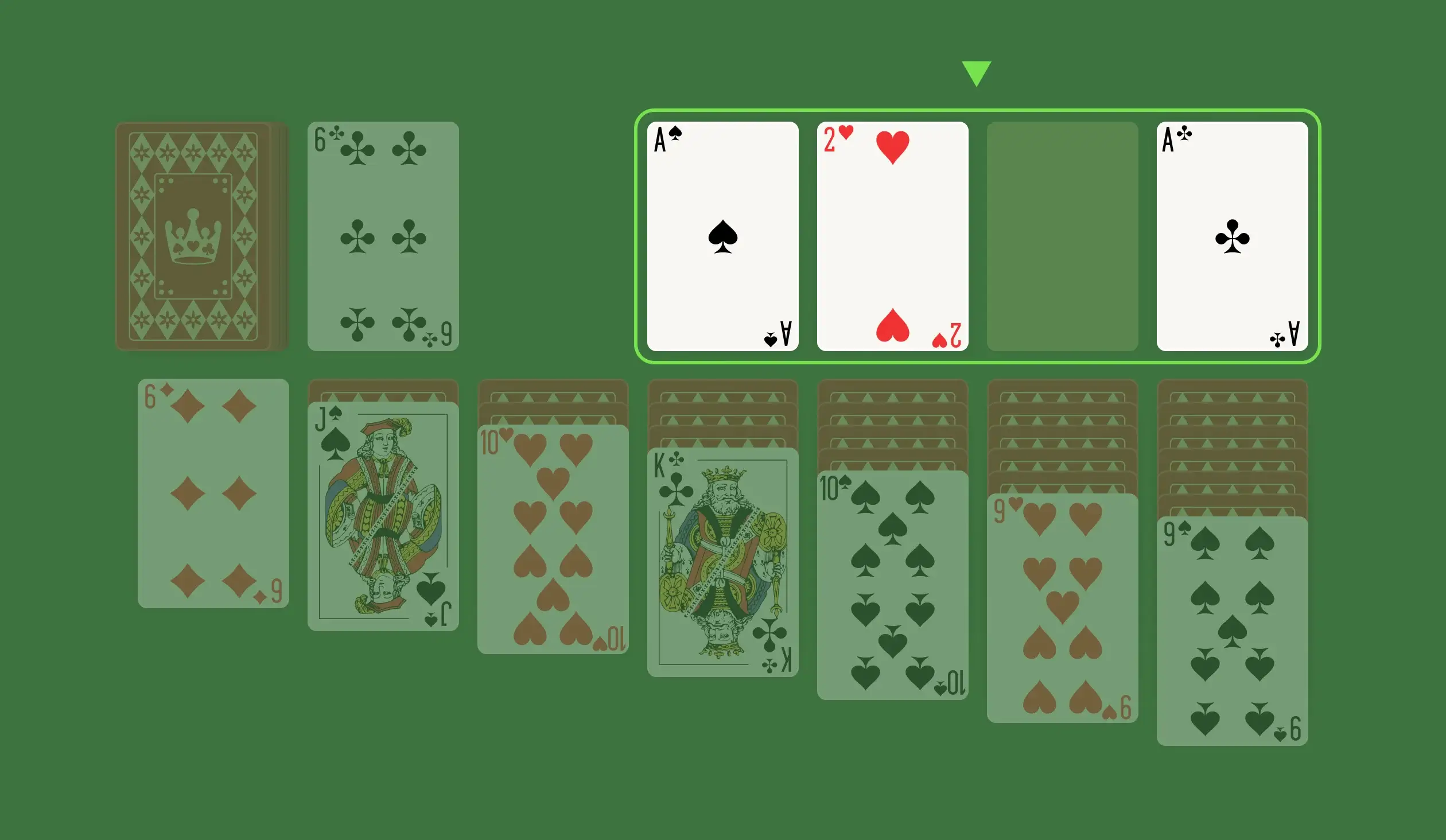
Disposez vos cartes sur le tableau en alternant les couleurs ET en les classant par ordre décroissant.
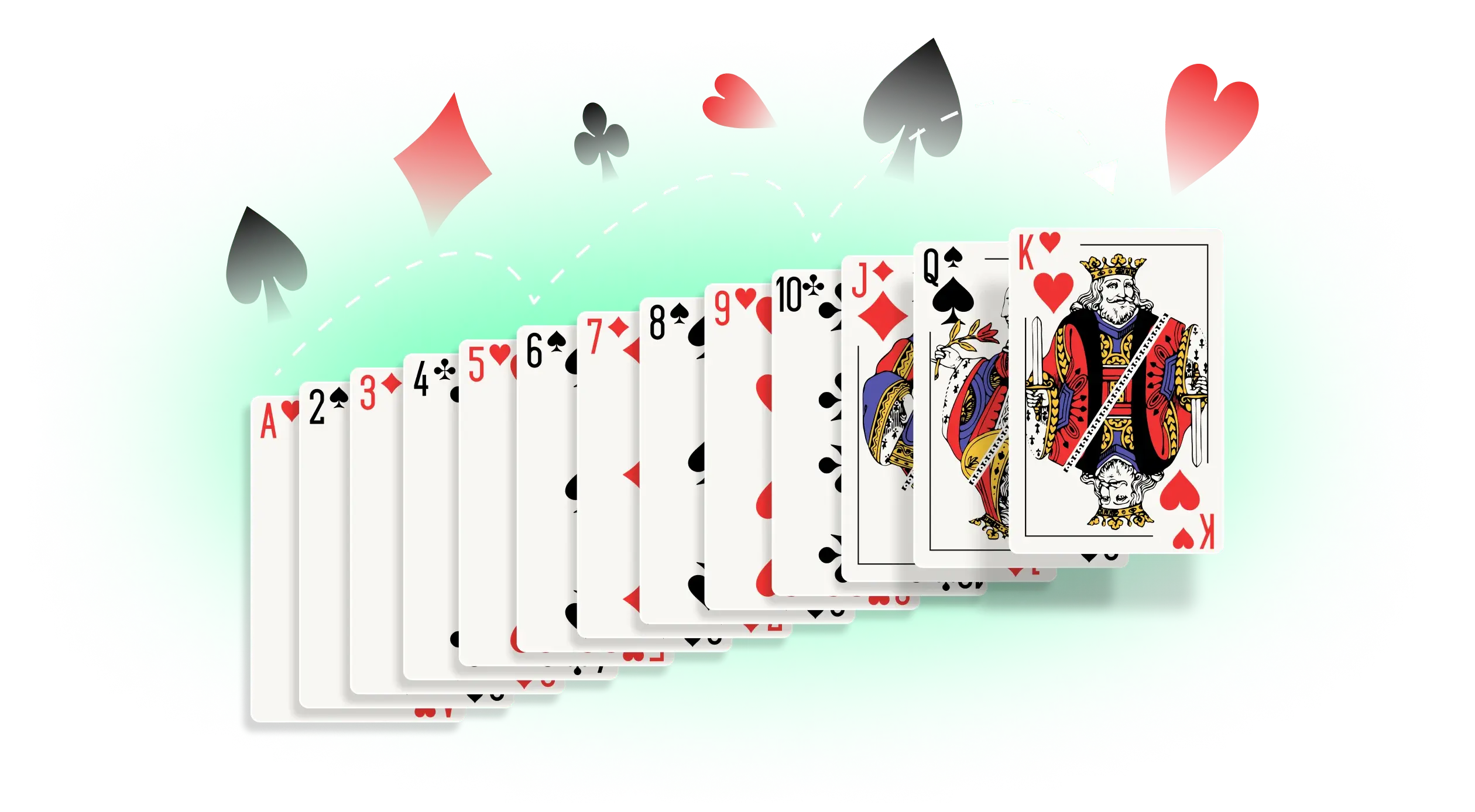

Utilisez nos boutons Indice et Annuler lorsque vous avez besoin d'aide.
Vous avez deux options de jeu lorsque vous puisez dans votre Pioche : tourner une carte à la fois ou tourner trois cartes à la fois. En fonction de vos vibrations, choisissez une option et commencez votre partie de Solitaire.
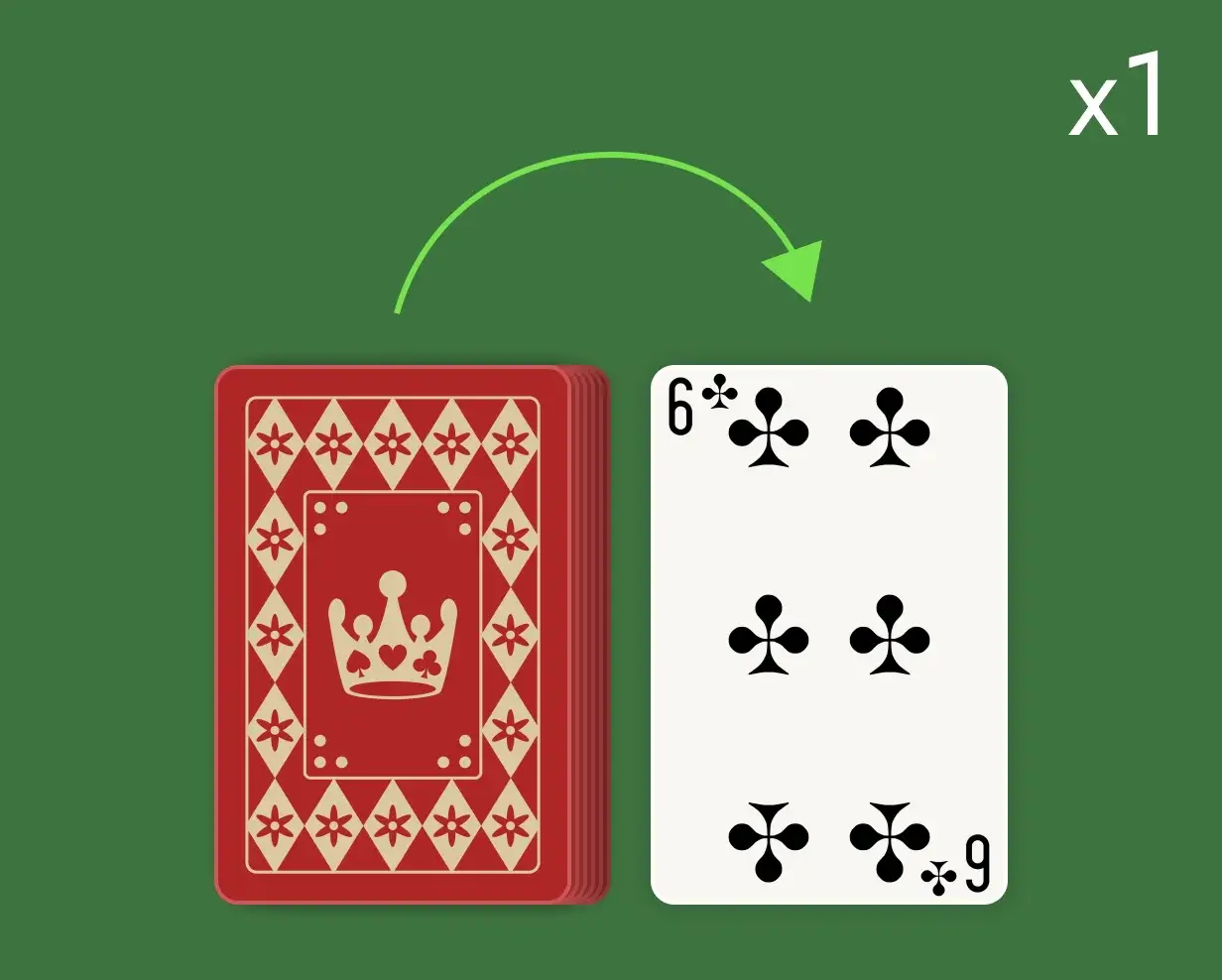
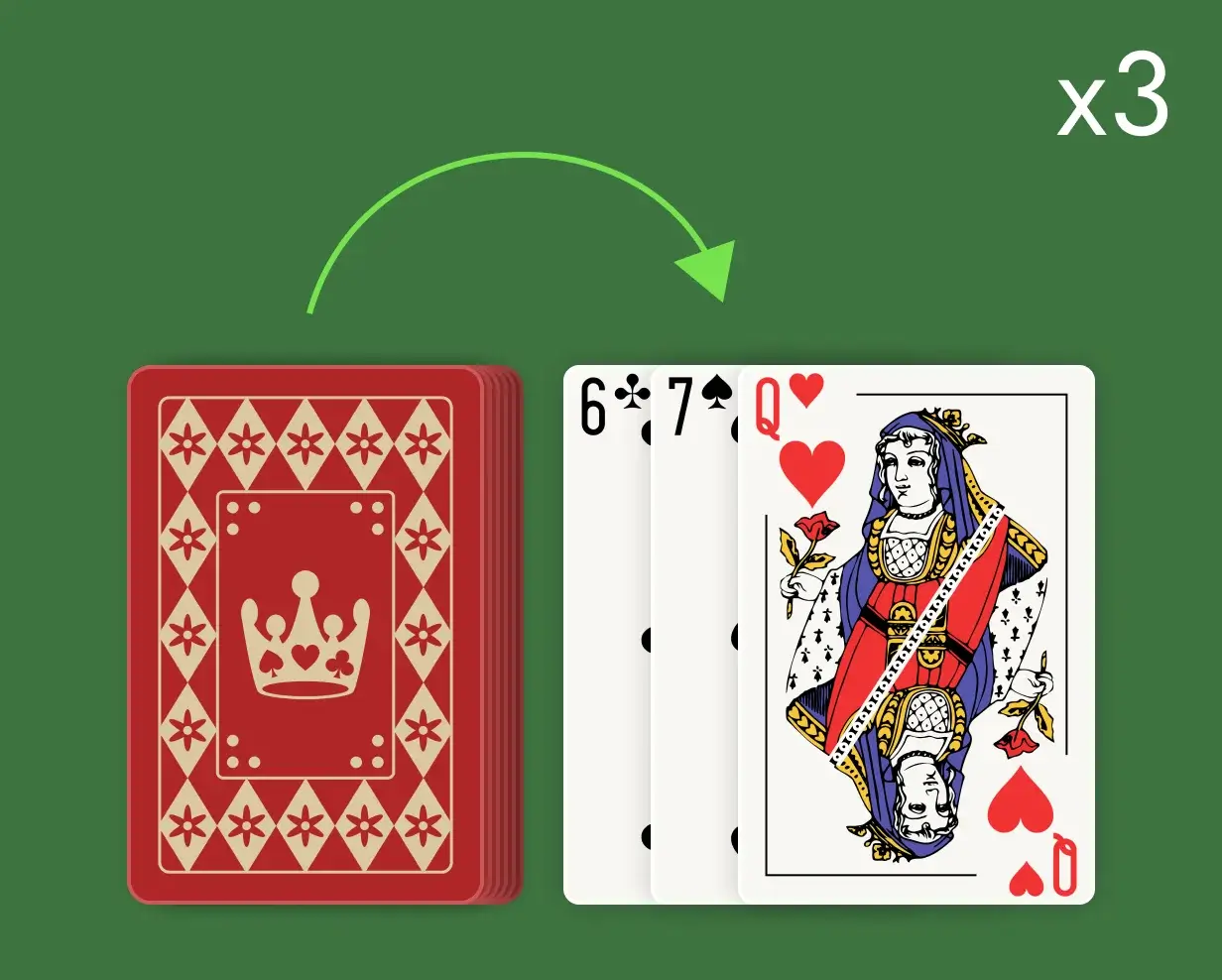
Préférez-vous utiliser un clavier pour jouer au Solitaire ? Grâce à des raccourcis clavier faciles d'accès, vous pouvez profiter de votre jeu comme vous l'entendez. Voici quelques conseils pour Windows et Mac :
Prêt à faire une pause ? Éloignez-vous de votre journée stressante et entrez dans notre monde de Solitaire - où chaque défi vous rapproche d'un esprit serein.
Concentrez-vous d'abord sur la révélation des cartes face cachée de votre Tableau.
Ne tirez des cartes de la Pioche que lorsque votre Tableau est bloqué.
Lorsque vous révélez une carte face cachée, d'autres cartes deviennent importantes. Déplacer des cartes vers la Fondation trop tôt peut empêcher l'utilisation des cartes nouvellement révélées.
Nos boutons Indice et Défaire ont été conçus dans un but précis : vous aider ! Utilisez-les pour continuer à jouer.
Le joueur moyen gagne environ 80 % de toutes les parties de Solitaire.
Le Solitaire existe depuis plus de trois siècles. La première version enregistrée du Solitaire date du 17e siècle.
Le plus petit nombre de déplacements nécessaires pour gagner une partie de Solitaire est de 52 - un pour chaque carte !
Le record du gain le plus rapide au Solitaire est de 8 secondes, établi par le joueur australien "DDOS-DAN" en octobre 2015.
Nous comprenons que jouer au Solitaire n'est pas qu'une question de jeu : c'est aussi une expérience. Notre plateforme est conçue pour amener les joueurs au cœur du Solitaire. Ce sont vos victoires, vos défis et votre expérience de jeu globale qui nous poussent à nous dépasser toujours plus. Gagnons ensemble !
Ajoutez le Solitaire à votre bureau pour ne plus jamais avoir à le chercher.